|
 Secure Site
Secure Site
|
 |
Archive for the 'Yoga Timer' Category
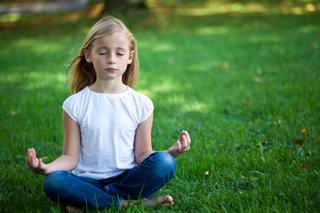 meditation improves attention New research shows that meditation can help you improve your ability to concentrate in two ways. First, it can make you better at focusing on something specific while ignoring distractions. Second, it can make you more capable of noticing what is happening around you, giving you a fuller perspective on the present moment.
Some of the most fascinating research on how meditation affects attention is being conducted by Antoine Lutz, PhD, an associate scientist at the Waisman Laboratory for Brain Imaging and Behavior at the University of Wisconsin at Madison, in collaboration with Richard Davidson and the Laboratory for Affective Neuroscience at the University of Wisconsin. Their work has shown that concentration meditation, in which the meditator focuses complete attention on one thing, such as counting the breath or gazing at an object, activates regions of the brain that are critical for controlling attention. This is true even among novice meditators who receive only brief training. Experienced meditators show even stronger activation in these regions. This you would expect, if meditation trains the brain to pay attention. But extremely experienced meditators (who have more than 44,000 hours of meditation practice) show less activation in these regions, even though their performance on attention tasks is better. The explanation for this, in Lutz’s view, is that the meditation training can eventually help reduce the effort it takes to focus your attention. “This would be consistent with traditional accounts of progress in meditation practice. Sustaining focus becomes effortless,” Lutz says. This suggests that people can immediately enhance concentration by learning a simple meditation technique, and that practice creates even more progress.
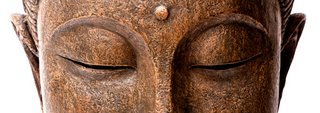 Buddha The researchers also looked at whether vipassana meditation training can improve overall attention. (Vipassana means “to see things as they really are,” and the meditation techniques are designed to increase focus, awareness, and insight.) Researchers label our inability to notice things in our environment as “attentional blink.” Most of us experience this throughout the day, when we become so caught up in our own thoughts that we miss what a friend says to us and have to ask her to repeat it. A more dramatic example would be a car accident caused by your thinking about a conversation you just had and not noticing that the car in front of you has stopped. If you were able to reduce your attentional blink, it would mean a more accurate and complete perception of reality—you would notice more and miss less.
To test whether meditation reduces attentional blink, participants had to notice two things occurring in rapid succession, less than a second apart. The findings, published in PLoS Biology, reveal that the meditation training improved the participants’ ability to notice both changes, with no loss in accuracy.
What explained this improvement? EEG recordings—which track patterns of electrical activity in the brain, showing precise moment-by-moment fluctuations in brain activation—showed that the participants allocated fewer brain resources to the task of noticing each target. In fact, the meditators spent less mental energy no-ticing the first target, which freed up mental bandwidth for noticing what came next. Paying attention literally became easier for the brain.
As a result, Lutz and his colleagues be-lieve that meditation may increase our control over our limited brain resources. To anyone who knows what it’s like to feel scattered or overwhelmed, this is an ap-pealing benefit indeed. Even though your attention is a limited resource, you can learn to do more with the mental energy you already have.
adapted from Yoga Journal, by Kelly McGonigal
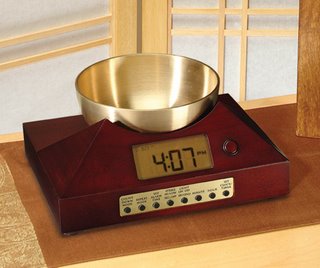 Zen Timepiece with brass singing bowl, a meditation timer Now & Zen
1638 Pearl Street
Boulder, CO 80302
(800) 779-6383
Posted in Bamboo Chime Clocks, intention, Meditation Timers, Meditation Tools, mindfulness practice, Now & Zen Alarm Clocks, Well-being, Yoga Timer
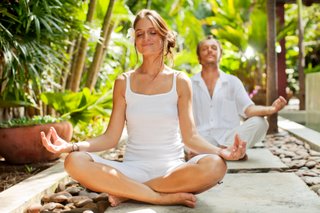 is yoga enough? When it came to the fitness benefits yoga can or can’t provide, yoga teacher John Schumacher had heard it all. A student of B. K. S. Iyengar for 20 years and founder of the Unity Woods studios in the Washington, D.C. area, Schumacher was convinced yoga provides a complete fitness regime. But many people, even some of his own students, disagreed. Yoga might be good for flexibility or relaxation, they’d say, but to be truly fit, you had to combine it with an activity like running or weight lifting.
Schumacher just didn’t buy it.
He knew three decades of yoga practice—and only yoga practice—had kept him fit. He didn’t need to power walk. He didn’t need to lift weights. His fitness formula consisted of daily asanas (poses) and pranayama (breathwork). That’s all he needed.
Four years ago at age 52, Schumacher decided to prove his point. He signed up for physiological testing at a lab in Gaithersburg, Maryland. As he expected, Schumacher tested near the top of his age group for a variety of fitness tests, including maximum heart and exercise recovery rates. His doctor told him that he was in excellent physical condition and estimated that Schumacher had less than a one percent chance of suffering a cardiac event. “I’ve always maintained that yoga provides more than adequate cardiovascular benefits,” says Schumacher. “Now I have the evidence that regular yoga practice at a certain level of intensity will provide you with what you need.”
Evidence of yoga’s ability to bolster fitness, however, goes well beyond Schumacher’s personal experience. Yoga Journal’s testing of three yogis also yielded impressive results. Even physiologists who don’t do yoga now agree that the practice provides benefits well beyond flexibility and relaxation. Recent research—though preliminary—shows that yoga may also improve strength, aerobic capacity, and lung function. If you practice yoga, you already knew that. But if, like Schumacher, you’ve been told by friends, family, doctors, or even other yoga students that you need to add some power walking for your heart or strength training for your muscles, here’s evidence that yoga is all you need for a fit mind and body.
Why Yoga Works
Exactly how does yoga build fitness? The answer you get depends on whom you ask. Robert Holly, Ph.D., a senior lecturer in the Department of Exercise Biology at U. C. Davis and one of the researchers on the U. C. Davis study, says that muscles respond to stretching by becoming larger and capable of extracting and using more oxygen more quickly. In other words, side benefits of flexibility include increased muscle strength and endurance.
“My own belief is that the small but significant increase in maximal oxygen capacity was due to an increase in muscle endurance, which allowed the subjects to exercise longer, extract more oxygen, and reach an increased maximal oxygen uptake,” says Holly.
Then there’s the pranayama theory. Birkel suspects that yoga poses help increase lung capacity by improving the flexibility of the rib area, shoulders, and back, allowing the lungs to expand more fully. Breathwork further boosts lung capacity—and possibly also VO2max—by conditioning the diaphragm and helping to more fully oxygenate the blood.
Birkel, Dina Amsterdam, and others are also quick to point out that Suryanamaskar (Sun Salutations) and other continuously linked poses increase the heart rate, making yoga aerobically challenging. And many yoga poses—particularly standing poses, balancing poses, and inversions—build quite a bit of strength because they require sustained isometric contractions of many large and small muscles. Of course, holding the poses longer increases this training effect.
Finally, yoga tunes you into your body and helps you to better coordinate your actions. “When you bring your breath, your awareness, and your physical body into harmony, you allow your body to work at its maximum fitness capacity,” says Dina Amsterdam. “Yoga class is merely a laboratory for how to be in harmony with the body in every activity outside of yoga. This improved physical wellness and fluidity enhance not just the physical well-being but also permeate all levels of our being.”
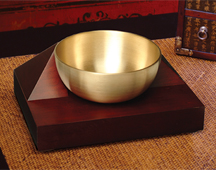 Yoga Timer with Tibetan Singing-Bowl Use our unique “Zen Clock” which functions as a Yoga Timer. It features a long-resonating acoustic chime that brings your meditation or yoga session to a gradual close, preserving the environment of stillness while also acting as an effective time signal. Our Yoga Timer & Clock can be programmed to chime at the end of the meditation or yoga session or periodically throughout the session as a kind of sonic yantra. The beauty and functionality of the Zen Clock/Timer makes it a meditation tool that can actually help you “make time” for meditation in your life. Bring yourself back to balance.
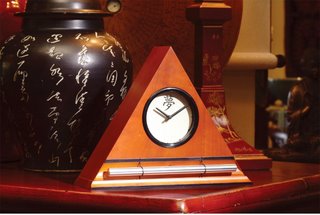 yoga chime timers and clocks Now & Zen’s Yoga Timer Shop
1638 Pearl St.
Boulder, CO 80302
(800) 779-6383
Adapted from Yoga Journal.com by Alisa Bauman stays fit through yoga, running, and fitness ball workouts.
Posted in yoga, Yoga Timer, Yoga Timers by Now & Zen
 the zen of air travel
By AYLIN ZAFAR
The San Francisco International Airport continues its quest to make itself its own destination. The airport has just opened a yoga room for harried travelers seeking a moment of peace following airport security.
In Terminal 2, serving Virgin America and American Airlines passengers, SFO’s “Zen Room” is reportedly the first of its kind. The space features dimmed lights meant to soothe weary spirits, a glass wall and door to act as a sound barrier from the busy noises of the terminal, and felt-covered rocks to add to the Zen garden atmosphere. The room will have plenty of yoga mats for travelers to use, and will be open from 4:30 a.m. to 12:30 a.m. each day.
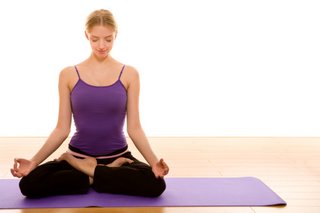 zen mediation space in SF airport Melissa Mizell, design director for Gensler, the architecture firm behind Terminal 2, said in a statement that the room “gives modern travelers a space that fosters and supports quiet and reflection,” MSNBC reports.
adapted from Time Magazine, January 2012
Use our unique “Zen Clock” which functions as a Yoga Timer. It features a long-resonating acoustic chime that brings your meditation or yoga session to a gradual close, preserving the environment of stillness while also acting as an effective time signal. Our Yoga Timer & Clock can be programmed to chime at the end of the meditation or yoga session or periodically throughout the session as a kind of sonic yantra. The beauty and functionality of the Zen Clock/Timer makes it a meditation tool that can actually help you “make time” for meditation in your life. Bring yourself back to balance.
Now & Zen’s Yoga Timer Shop
 Yoga Timer and Alarm Clock Shop - Boulder, CO 1638 Pearl Street
Boulder, CO 80302
(800) 779-6383
 zen chime alarm clock and meditation timers
Posted in Bamboo Chime Clocks, Chime Alarm Clocks, Well-being, yoga, Yoga Timer
 Meditation - Utamaro Woman I have always been intrigued by the idea of meditation. I would love to be able to sit quietly, relax and let my mind wander into a trancelike rest, all at the same time.
There are reported medical benefits to regular meditation too: you can bring down your heart rate and blood pressure. Meditation has been shown to help insomniacs sleep, nervous Nellies relax and those withchronic pain breathe more easily.
Meditation sounds like a perfect dream, actually, but who has time for that? As a television producer, I would say my daily list of things to do can run longer than a pilgrimage to the Ganges. Would it be worth adding meditation to my to-do list? I needed to be convinced.
So I went to Avery Fisher Hall in Manhattan for a group meditation led by Sri Sri Ravi Shankar, a spiritual leader and founder of The Art of Living Foundation. “The Guru,” as he is called, traveled from southern India to kick off the “I Meditate NY” campaign, designed to introduce stressed-out New Yorkers to the powers of the ancient practice of meditation. Gathered in the hall normally reserved for plays and operas were nearly 2,700 people ready to follow the spiritual teachings of the master on stage.
The preparation began with ancient Sanskrit chants from the folk group Bakti and soulful vocals from the Grammy-nominated singer Chandrika Tandon. But before long The Guru took center stage, sitting in the lotus position on a regal loveseat.
With a creeping smile on his face, he began to explain the three platinum rules of meditation. The first, he said, was to say to oneself, “For the next 10 minutes, I want nothing.” Sounded simple enough, but the truth is I did want something. I was a little hungry, even though I had a pretty big cheeseburger a few hours earlier. It even had all sorts of extras on it. My mind started to wander: Why was I hungry when I just had a big meal? Maybe it wasn’t as big as I thought? Oh man, that means that cheeseburger must have clearly been full of empty calories.
But The Guru had already moved on to platinum rule number two: “For the next 10 minutes, I do nothing.” Just then, my foot started to itch. I reached down to scratch it immediately, figuring the clock hadn’t yet started.
Rule three: “For the next ten minutes, I am nothing.” Now he was on to something. I liked that idea. It made me feel as if I had permission to float away, let my spirit drift into oblivion, all the while surrounded by thousands of people.
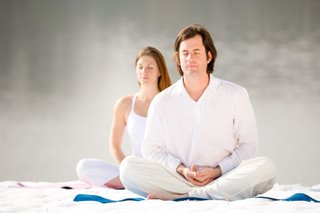 Meditation - Choose a Gong Meditation Timer Sounds of Silence
The group was full of Om’s and ready to sink into silence… or so we thought. Just then, The Guru reached into the pocket of his caftan for hiscellphone. The crowd burst into laughter — no doubt, this was a 21st-century guru. He promised it was only to time our imminent meditation, which he has said would last about 10 minutes.
Now we were on our way. He asked everyone to keep still and be quiet. If you didn’t think you could do so, it was now time for you to leave. He said nobody should leave in the middle of the journey, as that would not be fair to others around them. Parents with children were asked to leave now. It was time to begin.
The room fell silent, but not silent enough. There were coughs, bodily noises, feet sliding, and yes, a cell phone. I thought, it’s going to be tough to concentrate on doing nothing. The coughs seemed ceaseless. I wondered, well, we are heading into allergy season, is that why there are so many coughs? Or is this just how people always are? It isn’t often I’m in a room with 2,700 people.
But then something happened. I don’t really know what happened, because it’s as if I wasn’t there when it occurred. I mean, I was there, but I was nothing more than just there. Sitting. Breathing. Not hearing coughs. Not hearing feet shuffling. Not even hearing silence. I was awake. I was conscious. It wasn’t that hard. I was peaceful. I was meditating.
There we were. An auditorium full of silent people, together, effortless, releasing our minds from daily stress, buried in peace, meditating.
Meditation: Struggling to Do Nothing
And then it was over. The Guru woke us up — and then he gave us a jolt. He told us in his gentle meandering voice that we had been in this “amusement paradise” for 22 minutes. Not 10 minutes as he had suggested, but more than double that. The entire room gasped. We had disappeared for nearly the length of an evening news broadcast.
And, even though it felt counterintuitive to do something so seemingly solitary with so many others, it actually now made perfect sense. Later, The Guru told me, “Group meditations help in creating a positive energy in the atmosphere.” Meditation was all about vibrations, he said. Just as we “catch anger” from angry people around us, we “catch” positive energy from positive people around us. The room was surely full of positivity.
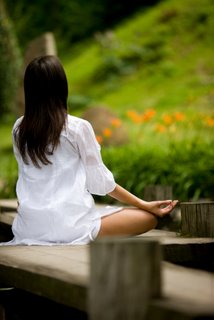 meditation timers with gongs So there you have it. A frazzled New Yorker with a Ganges-long list of to-dos may have just peacefully and willingly made her list longer.
Use our unique “Zen Clock” which functions as a Yoga & Meditation Timer. It features a long-resonating acoustic chime that brings your meditation or yoga session to a gradual close, preserving the environment of stillness while also acting as an effective time signal. Our Yoga Timer & Clock can be programmed to chime at the end of the meditation or yoga session or periodically throughout the session as a kind of sonic yantra. The beauty and functionality of the Zen Clock/Timer makes it a meditation tool that can actually help you “make time” for meditation in your life. Bring yourself back to balance.
It’s exquisite sounds summon your consciousness out of your meditative state with a series of subtle gongs. Once you experience the Zen Timepiece’s progressive tones, you’ll never want to meditate any other way. It serves as the perfect meditation timer. Available in 5 wood styles, including bamboo.
adapted from WorldNewsReport.com by Gitka Ahuja
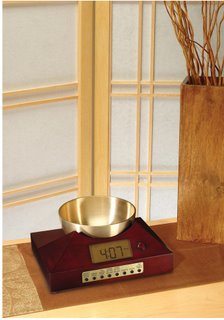 Gong Meditation Timers for Your Stillness Practice Now & Zen – The Gong Meditation Timer Store
1638 Pearl Street
Boulder, CO 80302
(800) 779-6383
Posted in Well-being, Yoga Timer, Yoga Timers by Now & Zen, Zen Alarm Clock, Zen Timepiece by Now & Zen, Zen Timers
 Meditation as a Transformation Tool - Ukiyo-e Many moons ago, a wandering Nepalese prince sat under a tree, vowing not to rise until he attained enlightenment.
After a long night of deep meditation, Siddhartha Gautama, better known as the Buddha, saw the light and declared that suffering is subjective, and can be reduced through self-awareness.
Today, 2500 years later, a growing number of American doctors and healthcare workers are teaching people who are ill how to apply Buddha’s epiphany to their lives.
adapted from abcnews.com by By Ephrat Livni
In hospitals, businesses and community centers around the country, meditation is increasingly being offered as a method of stress reduction, and to help patients better cope with the physical pain and mental strain associated with many medical conditions, including heart disease and HIV infection.
Recent research shows meditation’s soothing effects can be detected in arterial walls and in the brain. Once considered outside the mainstream, today more insurers are paying for meditation, both as a form of medication and as preventive medicine.
Learning to ‘Disidentify’
“Meditation is the act of disidentifying from inner thought flow and concentrating on calming and healing,” explains Robert Thurman, Ph.D., a professor of Indo-Tibetan Buddhist Studies at Columbia University in New York and the first American to become a Tibetan Buddhist monk. Through meditation, doctors help patients detach from their pain and anxieties and cultivate a connection between the mind and the body, he says.
 Gong Clock - Progressive, Soothing Tones to End Your Stillness Practice While there are many kinds of meditation, the mindfulness approach, used widely in hospitals around the country, focuses primarily on breathing. Practices vary, but the basic idea involves sitting comfortably, with eyes closed, spine straight and attention focused on breathing.
Practitioners aim to maintain a detached, calm awareness of their thoughts and sensations. Through mindfulness, experts say, meditators learn to pay attention to the present and cultivate clarity of mind, equanimity and wisdom.
Minor Mindfulness Miracles
All of which may sound very abstract. Unless, points out Jeff Brantley, Ph.D, Director of the Mindfulness-based Stress Reduction (MBSR) Program at the Duke Center for Integrative Medicine in Durham, N.C., you are a patient who is suffering.
“We had one patient, a 40-year-old woman with metastatic breast cancer who was enrolled in the 8-week MBSR program. At her exit interview she said that before the course began 5 minutes wouldn’t go by without her worrying about what would become of her and her young family and now, after the class, she can concentrate on other things for more than hour at a time, even days,” Brantley says, calling the results “a minor miracle.”
The Duke program is one of at least 70 such mind-body based courses modeled on the University of Massachusetts Medical School’s Stress Reduction Clinic, in Worcester, Mass., created in 1979 by Dr. Jon Kabat-Zinn. Taught mainly in hospitals around the country, mindfulness training is typically run as an 8-week-long outpatient program to complement other medical treatments.
The aim, according to a website dedicated to Mindfulness-based Stress Reduction, is to assist people in taking better care of themselves “through a gentle but rigorous daily discipline of meditation and relaxation.”
Doctors refer patients to mindfulness programs for any number of diseases and disorders, including heart disease, anxiety and panic, job or family stress, chronic pain, cancer, HIV infection, AIDS, headaches, sleep disturbances, type A behavior, high blood pressure, fatigue and skin disorders.
In keeping with the growing interest in preventative medicine, some insurance companies, such as Blue Cross/Blue Shield in Massachusetts and a number of insurers in what Thurman calls “the more enlightened states like Oregon and California,” are now paying for all or part of these programs.
Research for Coverage
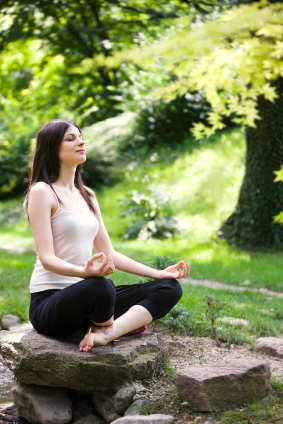 Meditation for Well-being, Choose a Soothing, Chime Timer While the National Institutes of Health says it is too soon to quantify the medical benefits of meditation, Anita Greene, spokeswoman for the Institute’s Complementary and Alternative Medicine division, concedes, “It is a therapy worthy of further scientific investigation to refute or support the health claims being made.”
In fact, in 1999, the NIH granted Maharishi University of Management in Fairfield, Iowa, $8 million during a five-year period to study the effects of meditation in African Americans with cardiovascular diseases.
Researchers at Maharishi say that relaxing and reducing stress through transcendental meditation may reduce artery blockage and the risk of heart attack and stroke, according to a study released in the March issue of the American Heart Association’s journal Stroke (see related story).
Another recent pilot study, published in the May 15 issue of NeuroReport, by Sara Lazar, Ph.D., a Harvard research fellow in psychology at Massachusetts General Hospital, in Boston, suggests meditation activates specific regions of the brain that may influence heart and breathing rates. Using a brain imaging technique known as functional magnetic resonance imaging, or fMRI, Lazar measured blood flow changes in experienced meditators.
“What we found were striking changes. There was significant decrease in blood flow and activity in specific areas of the brain,” says the study’s senior author Dr. Herbert Benson, president of the Mind/Body Medical Institute at Beth Israel Deaconess Medical Center in Boston, Mass.
The usual, fight-or-flight brain response liberates adrenalin and is stressful to the body, he explains, but during meditation the brain acts to quiet the body through concentrated breathing or word repetition, evoking a relaxation response that minimizes the harmful effects of stress.
“It does away with the whole separation of mind and body and gives further proof to insurers that [meditation] is cost effective,” he says. Ultimately, Benson predicts, medicine will be akin to a three-legged stool, leaning on pharmaceuticals, surgeries and procedures, and self-care, which includes, meditation, nutrition, exercise and health management.
A Tool for Transformation
But, Thurman points out, meditation is for more than just health benefits: It is a tool for seeking inner transformation. Meditation practices in the health field are secular, however.
 Gong Clock for Meditation and Yoga Practices “We get everyone from born-again Christians to avowed atheists. We tell people we are not trying to make anyone into anything,” Duke’s Brantley reassures. No matter what their religious persuasion, he says, patients find an increased awareness and appreciation of their lives.
Registered nurse Shirley Gilloti, a San Rafael, Calif., health educator and mindfulness training teacher agrees, “I tell people to try to bring more mindfulness to saying their rosary if that’s what they do.”
Use our unique “Zen Clock” which functions as a Yoga & Meditation Timer. It features a long-resonating acoustic chime that brings your meditation or yoga session to a gradual close, preserving the environment of stillness while also acting as an effective time signal. Our Yoga Timer & Clock can be programmed to chime at the end of the meditation or yoga session or periodically throughout the session as a kind of sonic yantra. The beauty and functionality of the Zen Clock/Timer makes it a meditation tool that can actually help you “make time” for meditation in your life. Bring yourself back to balance.
 Gong Clock & Timers by Now & Zen, Inc. - Boulder, CO Now & Zen – The Gong Clock Shop
Downtown Boulder, CO
1638 Pearl Street
Boulder, CO 80302
(800) 779-6383
Orders@Now-Zen.com
Posted in Bamboo Chime Clocks, Yoga Timer, Yoga Timers by Now & Zen, Zen Alarm Clock, Zen Timepiece by Now & Zen
 Yoga Clocks and Timers by Now & Zen, Inc. YOGA FOR BEDTIME
Need help sleeping? Doing yoga exercises before bedtime can be just what you need
Sit up in bed comfortably, either with your legs folded or straight in front of you; whatever you can do with the most ease. Sit up and lean slightly back on your pillows or backboard. Close your eyes and rest your hands on your thighs and just breathe here for a few minutes. This doesn’t have to be a serious meditation but just a short while to do nothing but breathe.
Need a Yoga & Meditation timer? Get the natural one: A Bowl-Gong Bamboo Zen Timepiece from Now & Zen
Spiritual practices such as meditation or yoga are best done in an environment of beauty and tranquility. And the clock/timer you use for your practice can make a real difference in creating such an environment. But using a timer with artificial “beeps,” or even “recorded gongs,” coming out of a plastic box can be less than ideal. The Bamboo Zen Timepiece is unlike any other meditation timer on the market because it features a real, natural, acoustic, long-resonating gong, produced by its traditional Japanese style bowl-gong, or “rin-gong”. Moreover, The Zen Timepiece is made with sustainable natural bamboo, so it is as beautiful to see as it is to hear. Once you use a Zen Timepiece, nothing else will do.
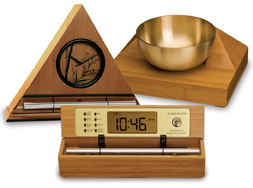 Yoga & Meditation Timer and Clocks Now & Zen – The Yoga Clock & Timer Store
1638 Pearl Street
Boulder, CO 80302
(800) 779-6383
Posted in Bamboo Chime Clocks, Meditation Timers, Meditation Tools, mindfulness practice, Well-being, Yoga Timer, Yoga Timers by Now & Zen, Zen Alarm Clock, Zen Timepiece by Now & Zen, Zen Timers
 Choose a Soothing Chime Timer for Your Mindfulness Practice - Utgarwa Beauty Mindfulness
“Mindfulness” is the spiritual practice of being aware of your present moment. World famous Zen monk Thich Nhat Hanh has developed the use of a bowl-gong in a practice he calls the “mindfulness bell.” When you hear the sound of the mindfulness bell, you are invited to take a moment to breathe in and out and center yourself in the present. This practice allows the sound of the bowl-gong to periodically connect you to the peace and tranquility that resides inside you right now. This delightful practice reduces stress and improves your overall health.
Mindfulness practice, is increasingly being employed in Western psychology to alleviate a variety of mental and physical conditions.
Scientific research into mindfulness generally falls under the umbrella of positive psychology. Research has been ongoing over the last twenty or thirty years, with a surge of interest over the last decade in particular. In 2011, The Natural Institute for Health’s National Center for Complementary and Alternative Medicine (NCCAM) released the findings of a study wherein magnetic resonance images of the brains of 16 participants 2 weeks before and after mindfulness meditation practitioners, joined the meditation program were taken by researchers from Massachusetts General Hospital, Bender Institute of Neuroimaging in Germany, and the University of Massachusetts Medical School. It concluded that “..these findings may represent an underlying brain mechanism associated with mindfulness-based improvements in mental health. [From Wikipedia]
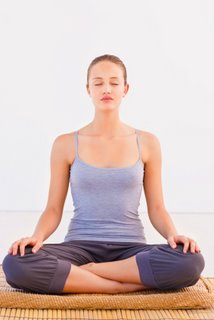 Choose a Yoga & Meditation Timer with Soothing Chimes
The Zen Timepiece can serve as a mindfulness bell in two ways: it can be set to strike on the hour (providing an hourly moment of stillness), or it can be set to strike at a programmed interval, such as every 20 minutes, or even every three hours.
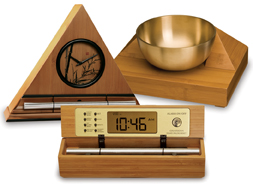 Soothing Chime Meditation & Yoga Timers from Now & Zen, Inc. Now & Zen – The Meditation
& Yoga Timer Store
1638 Pearl Street
Boulder, CO 80302
(800) 779-6383
Posted in Bamboo Chime Clocks, Meditation Timers, Meditation Tools, mindfulness practice, Well-being, yoga, Yoga Timer, Yoga Timers by Now & Zen, zen
 Meditation Affects Your Body - Set Your Gong Meditation Timer It turns out peaceful thoughts really can influence our bodies, right down to the instructions we receive from our DNA, according to a new study.
Researchers for the study, published in the Public Library of Science, took blood samples from a group of 19 people who habitually meditated or prayed for years, and 19 others who never meditated.
The researchers ran genomic analyses of the blood and found that the meditating group suppressed more than twice the number of stress-related genes — about 1,000 of them — than the nonmeditating group.
The more these stress-related genes are expressed, the more the body will have a stress response like high blood pressure or inflammation. Over long periods of time, these stress responses can worsen high blood pressure, pain syndromes and other conditions.
The nonmeditating group then spent 10 minutes a day for eight weeks training in relaxation techniques that involved repeating a prayer, thought, sound, phrase or movement.
“What this does is to break the train of everyday thought — you no longer have stressful thoughts and because of that the body is able to return to a healthy state,” said Dr. Herbert Benson, director emeritus of the Benson-Henry Institute Mind/Body Medicine and an associate professor of medicine at Harvard Medical School.
By the end of the training, the novice meditating group was also suppressing stress-related genes, although at lower levels than those of the long-term meditating people.
Meditation in the Genes
“In the old days, we thought the mind didn’t affect the body,” Benson said. “In truth, it’s breaking down the very old rule.”
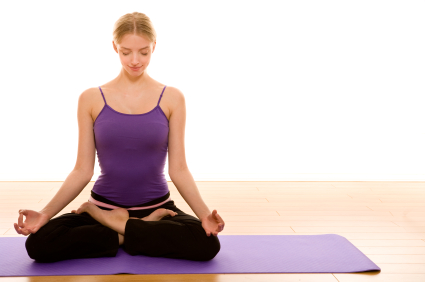 Gong Meditation Timers Have Soothing Acoustic Sounds Indeed, fellow mind-body researchers are finding more evidence that meditation and spiritual practices can influence the body in elemental ways.
Dr. Dean Ornish, professor of medicine and founder of the Preventive Medicine Research Institute at the University of California at San Francisco, recently found a relationship between meditation and genes in prostate cancer.
“This is an important pilot study showing that meditation alone may favorably alter gene expression in whole blood,” Ornish said. “These findings provide additional evidence to our recent study in PNAS [the Proceedings of the National Academy of Sciences] showing that meditation — when combined with better nutrition and moderate exercise — also favorably altered gene expression in prostate tissue.”
But researchers warn that only preliminary steps have been taken toward establishing a connection between genes and meditation.
“It’s on the limits of sensitivity of where we can go on genomics and proteomics,” said Towia Libermann, co-author of the study and director of the Beth Israel Deaconess Medical Center Genomics Center in Boston. “We can’t go into the brain itself, so a lot of what we do is going on in the blood.”
That difficult step from brain to blood can make research to link meditation and genetics difficult.
“Things happen, and genes get turned on or turned off — the genes make RNA, then the RNA makes proteins,” said Dr. Charles Raison, clinical director of the Mind Body Program in the department of psychiatry and behavioral sciences at Emory University in Atlanta.
Raison said it is those final proteins in the process that have a significant effect on the body, and sometimes RNA doesn’t end up making those proteins. Since genomic analysis measures only the RNA in the blood, it can’t guarantee that RNA had a specific effect on the body.
“Not everything gets down to the business end of the gun,” said Raison, who would also have liked to see more definition of what meditation means in the study as opposed to including any forms of repetitive prayer or yoga.
Future Thoughts for Study
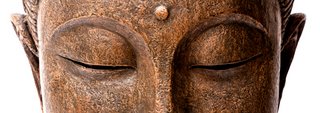 Buddha “Before you can say meditation does X, you’ve got to have a sense of what you mean by meditation,” Raison said. “There’s data to suggest that different meditative practices have different physical effects.”
Yet Raison found the stress-related study intriguing.
“The study is consistent with other lines of emerging research, including ours,” said Raison, who noted that lonely people have similar stress-related gene expression as the nonmeditating group in the study.
Another study by Dr. Richard Davidson at the University of Wisconsin found that people who were taught to meditate after a vaccination developed more antibodies to the virus than people who did not meditate afterward, Raison said.
According to Raison, it all falls in line with a modern-day misfiring of “danger pathways” that ramp up the body for fight or flight but also turn down the immune system and increase inflammation. If the meditation study proves correct, it could help stem these changes, along with exercise and diet.
“The gene changes have a lot to do with things that cause wear and tear on the body and the brain,” said Raison. “Diabetes, cardiovascular disease, dementia, many diseases in the modern world are linked to this sort of wear and tear.”
The researchers in the stress study would like to next focus on these types of individual diseases.
“If you’re about to be torn apart by a tiger, these stress responses are adaptive,” Raison said. “But if my boss is yelling at me every morning, these ancient responses are activated, but they are not useful.”
adapted from abcnews.com by Lauren Cox
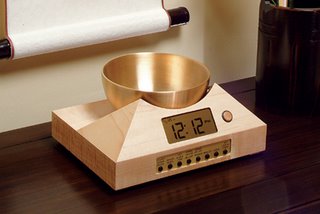 Gong Meditation Timers for Your Stillness Practice Although meditation can be done in almost any context, practitioners usually employ a quiet, tranquil space, a meditation cushion or bench, and some kind of timing device to time the meditation session. Ideally, the more these accoutrements can be integrated the better. Thus, it is conducive to a satisfying meditation practice to have a timer or clock that is tranquil and beautiful. Using a kitchen timer or beeper watch is less than ideal. And it was with these considerations in mind that we designed our digital Zen Alarm Clock and practice timer. This unique “Zen Clock” features a long-resonating acoustic chime that brings the meditation session to a gradual close, preserving the environment of stillness while also acting as an effective time signal.
It’s exquisite sounds summon your consciousness out of your meditative state with a series of subtle gongs. Once you experience the Zen Timepiece’s progressive tones, you’ll never want to meditate any other way. It serves as the perfect meditation timer. Available in 5 wood styles, including bamboo.
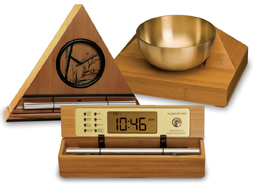 Bamboo Gong Meditation Timer and Chime Clocks Now & Zen – The Gong Meditation Timer Shop
Downtown Boulder
1638 Pearl Street
Boulder, CO 80302
(800) 779-6383
Posted in Well-being, Yoga Timer, Zen Timepiece by Now & Zen, Zen Timers
 Soothing Gong Meditation Timers - It's exquisite sounds summon your consciousness out of your meditative state with a series of subtle gongs. (HealthDay News) — There are many forms of mediation, most of which are rooted in ancient tradition.
For many people, it’s a great way to relax and soothe stress.
Here’s a summary of meditation’s common principles, courtesy of the U.S. National Institutes of Health’s National Center for Complementary and Alternative Medicine:
- Find a quiet place with little sound or distracting activity.
- Find a position that’s comfortable for you, including sitting, lying down, walking or standing.
- Focus completely on meditation, which in practice may include repeating a word or phrase, focusing mentally on an object or focusing on breathing in a certain way.
- Have an open mind and learn to acknowledge life’s distractions without necessarily judging or acting on them.
- Set your Gong Meditation Timer for 20 minutes and relax.
adapted from abcnews.com by By Diana Kohnle
Although meditation can be done in almost any context, practitioners usually employ a quiet, tranquil space, a meditation cushion or bench, and some kind of timing device to time the meditation session. Ideally, the more these accoutrements can be integrated the better. Thus, it is conducive to a satisfying meditation practice to have a timer or clock that is tranquil and beautiful. Using a kitchen timer or beeper watch is less than ideal.
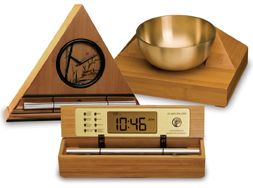 Gong and Chime Meditation Timers and Clocks
And it was with these considerations in mind that we designed our Zen Alarm Clock and practice timer. This unique “Zen Clock” features a long-resonating acoustic chime that brings the meditation session to a gradual close, preserving the environment of stillness while also acting as an effective time signal.
The Zen Clock can be programmed to chime at the end of the meditation session or periodically throughout the session as a kind of sonic yantra. The beauty and functionality of the Zen Clock/Timer makes it a meditation tool that can actually help you “make time” for meditation in your life.
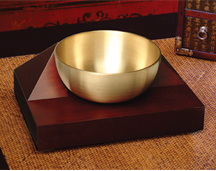 Gong Meditation Timers - preserving the environment of stillness. Now & Zen – The Gong Meditation Store
Downtown – Boulder, Colorado
1638 Pearl Street
Boulder, CO 80302
(800) 779-6383
orders@now-zen.com
Posted in Well-being, Yoga Timer, Zen Alarm Clock, Zen Timepiece by Now & Zen, Zen Timers
 Use Your Gong Meditation Timer More Often - Utamaro Ukiyoe Sharon Salzberg said her mind might be very different if it weren’t for meditation, and new neurologic research suggests that she might be right.
Troubled by a traumatic, stressful childhood, Salzberg traveled to India as a college student and discovered meditation. Not only did it help her deal with her painful past, Salzberg said, but the practice helped change the way her mind worked.
“I hadn’t really looked within,” said Salzberg, a co-founder of the Insight Meditation Society and author of seven books on meditation. “I felt much more presence, rather than being distracted. It felt like the whole world opened up for me.”
A new study from Yale University suggests that the brains of experienced meditators like Salzberg may actually work differently than brains of those who don’t meditate. The study gives scientists a window into the meditating mind, providing evidence that the practice appears to change the way the brain works and could give meditators a leg up when it comes to dealing with mental disorders.
Dr. Judson Brewer, medical director of the Yale Therapeutic Neuroscience Clinic, and his colleagues asked 10 experienced meditators and 13 people with no meditation experience to practice three basic meditation techniques: concentration, loving-kindness, and choiceless awareness.
The team then used functional magnetic resonance imaging to observe the participants’ brain activity when they were practicing the meditative techniques and when they were instructed not to think of anything in particular.
In a report published today in the Proceedings of the National Academy of Sciences, Brewer and his team report that the experienced meditators had decreased activity in an area of the brain called the default mode network, a region that is usually at work when the mind wanders. Even when the meditators weren’t meditating, this region of their brain was much quieter than in their inexperienced counterparts.
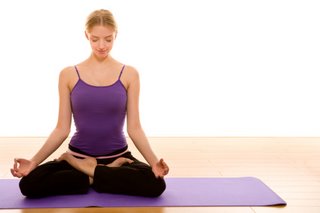 Meditation Gong Timers for Your Practice Most people spend a lot of time in mind wandering or daydreaming, and research shows that it comes with cognitive pros and cons. Scientists have shown that daydreaming can be a good thing, providing a boost for creativity, aiding in the processing of social functions, and refining other important psychological processes.
However, recent studies have suggested that a wandering mind is also an unhappy one. In 2010, one study found that people reported being significantly less happy when their minds were wandering than when they were engaged in the task at hand. Researchers suggest that this is because when our minds are wandering, most of us are worrying rather than living in the moment.
Brewer also notes that the psychological hallmark of many forms of mental illness — anxiety, depression, post-traumatic stress disorder, and schizophrenia — is a preoccupation with one’s own thoughts, specifically the negative ones. A series of studies have linked these disorders with overactivity or faulty neurological wiring in the default mode network, the brain region that was less active in experienced meditators.
“One of the things that meditation and basic mindfulness seems to be doing is quieting down this region of the brain,” Brewer said. “It absolutely makes sense, given what we know about the default mode network.”
Meditation isn’t a cure for mental illness, Brewer said, but he said his study suggests that there may be a neurological basis for the benefits that many meditators report — increased awareness, improved concentration, and a better ability to deal with the cognitive and emotional stresses of modern life.
Salzberg said she hopes that increased scientific study will continue to document the benefits of meditation for easing a troubled mind.
“It’s quite great that in our contemporary time where science is the language of validation, there’s evidence showing that in fact this is true,” Salzberg said.
adapted from abcnews.com by Carrie Gann
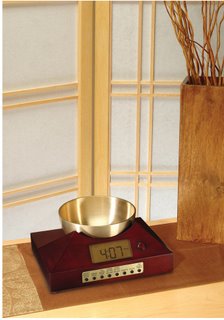 Singing Bowl - Gong Meditation Timer for Your Stillness Practice Now & Zen – The Only Gong Meditation Timer Store
1638 Pearl Street
Boulder, CO 80302
(800) 779-6383
Posted in Well-being, yoga, Yoga Timer, Zen Timepiece by Now & Zen, Zen Timers
« Previous Page — « Previous Entries
Next Entries » — Next Page »
|
|
|
|